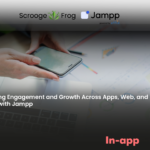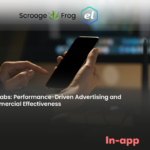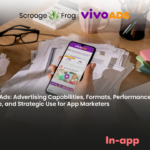Difference between the statistics from the Facebook Ads Manager and Analytics
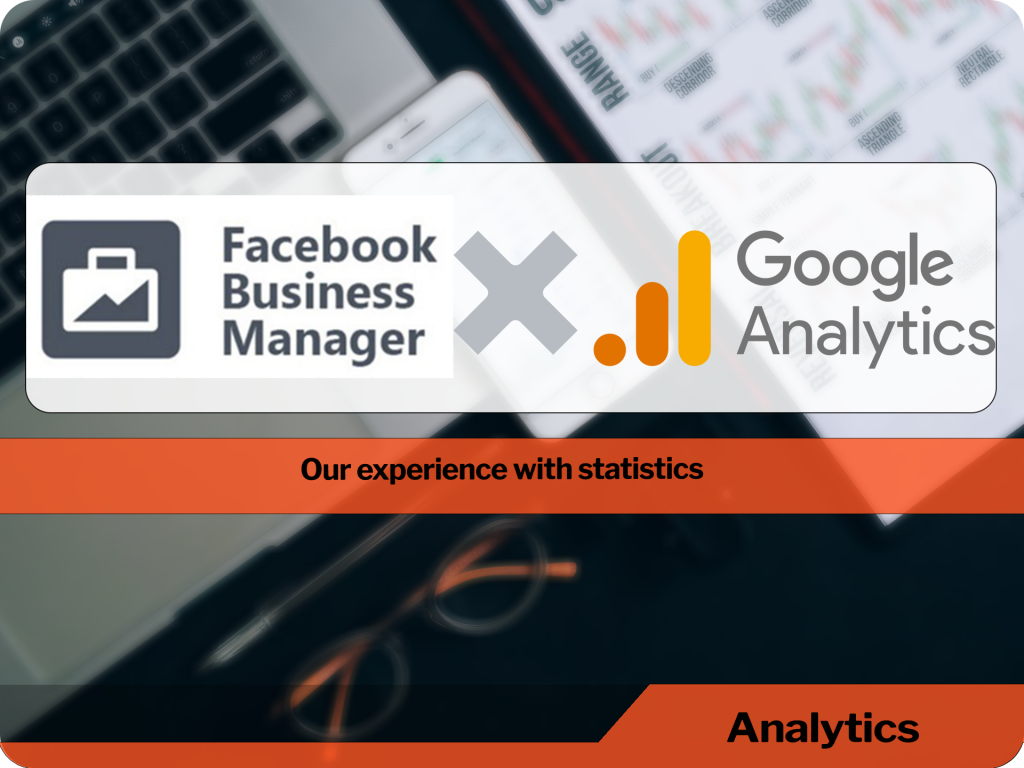
- Ads Manager assigns attribution only three sources: Facebook Ads, Instagram Ads, Audience Network, and Facebook Analytics — five. To these are added the Facebook Organic (organic unit), and Unknown (setup with unidentified source).
- In Facebook Analytics installation is recorded in the statistics of the day when the app was first opened (first launch or first open), and in Ads Manager — the installation is attributed to the day when was made the last click or view ads.
- The attribution window — the period measured from first contact of the user is to the target actions — Facebook Analytics is two years, in Ads Manager — 28 days. That is, Facebook Analytics assigns attribution of action if it was committed within two years from the date of clicks on advertising.
- In Facebook Analytics perfect event is recorded in the statistics of the day when it was committed. In Ads Manager, the event is recorded in the statistics of the day when there was a click on the advertisement which led to the coming events.
The pros and cons of Facebook Analytics
The good:
- The system is already integrated with Facebook, there is no need to associate the advertising offices.
- Don’t need a markup of references to retrieve data.
- Many of the tools and events are configured by default.
- There is the possibility of setting free push notifications to enhance the involvement of users in the application
Disadvantages:
- The system does not work with other sources, the main Facebook Business Manager
2. The attribution window is two years.
Find Facebook Analytics is very simple:

How to configure event tracking from inside the app
For qualitative analysis settings should be integrated set of application development tools (SDK) and configure the Facebook event.
- Register your application in Facebook for Developers
Without logging in Facebook for Developers you will not create and will not be able to use the App ID, and without it will not implement the SDK.
App ID is issued immediately after registration.

- Add the SDK to the app code
From this step depends on the entire configuration process and data analysis.
Incorporate a set of application development tools Facebook code your APPA using simple algorithms:
for Android + instructions;
for iOS + instructions.
- Set up event tracking in Android / iOS
Custom events will provide data on the committing of useful actions in the application. You can build a funnel conversions within the application and understand how users behave, where can be the problem.
Facebook SDK since the installation of the app passes the basic events and their default settings — the so-called 14 standard events:
The achievement level. When the user passes the level in the game or performs a similar task in the application.
– Adding payment information.
– Add to cart.
– Add to wish list.
– The application to run. The event is logged as soon as a person begins to use the app on your device.
– Completion of registration. When the user completes the registration process account.
– The completion of the application.
– Checkout.
– Purchase.
– Assessment. Event is logged when one evaluates something or expresses an opinion, e.g. about the product, place.
– Search. Registration event when searching for something within the app.
– Waste of credits..
– Unlocking achievements. Event is logged when achieving certain goals within the app.
– The viewing application.
It is important to understand the difference between an event and a parameter:
event — the action that a person performs in your app, for example, the passage level, adding a product to cart or purchase$
parameter — specific data point for an event, for example, the third level, or $3,72.
Can also create a customized event. But Facebook Ads Manager any custom event logs as “Other” — separate register for multiple events statistics it is impossible, it will have to only look at Facebook Analytics.
If you do not know what events are important for your project, use the examples from the reference materials Facebook.
The finished event list to pass to a programmer he will implement them in the app. Can dump him and these links for reference:
the introduction of events into the Android;
introduction events in iOS.4. Confirm the correctness of the registered events
To verify the correctness of the transmitted events, the programmer needs to go to the tab Event debugging (“Debug events”), there is a list of recent events. It is possible to confirm the correct setting, for example by filtering advertising ID of the test device.
Advertising ID is typically located in one of the menu items “Settings” of the phone.
Chips and buns analytical tool Facebook Analytics
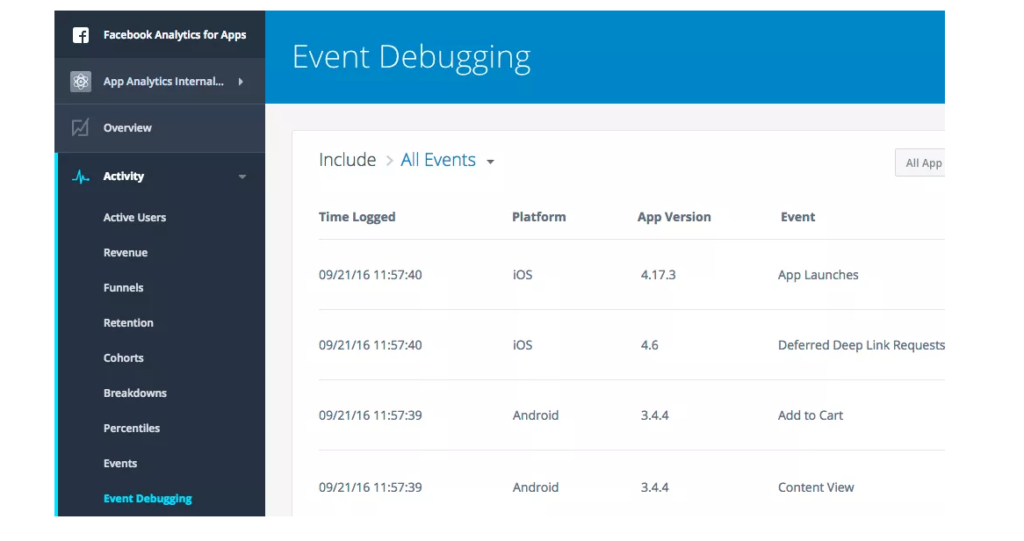
- What does the tab “Overview”
This section displays the global metric:
the number of active users;
age and gender of the audience;
the number of installations and launches of the application;
the median (average user) length of sessions;
the percentage of installations of different versions of the application;
the percentage of installations of the application across countries;
the percentage of operating versions of devices on which the application was installed.
Also in this section is beta auto insight. In fact, this machine learning technology in your account, and absolutely free. The tool analyzes the incoming data and offers the user Analytics and automatic Facebook insights at the top of the screen.
These findings may be useful for optimizing campaigns, especially in combination with good structure of the account, which will allow the technician to quickly implement the necessary changes.
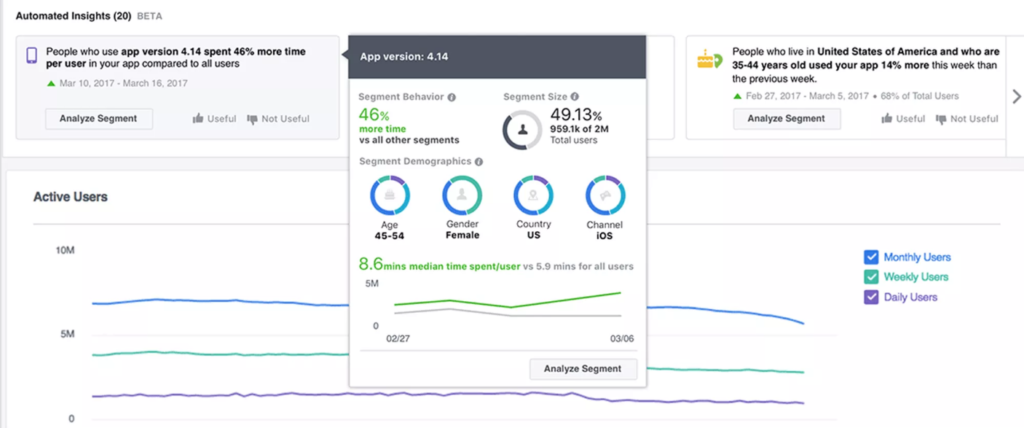
- Individual reports in Dashboards
This section is dedicated to Facebook Analytics customizable dashbord. This tool will help to visualize the transmitted data. Using the tool you can generate visual graphics as a Supplement to the reports in the table format.
The job needs to be with the button “Create panel”. Then choose how to name the panel, and also whether it will be available for all users with access to application statistics, or only the user that created this panel.

The next step is to add the charts. On one panel there may be a few diagrams.
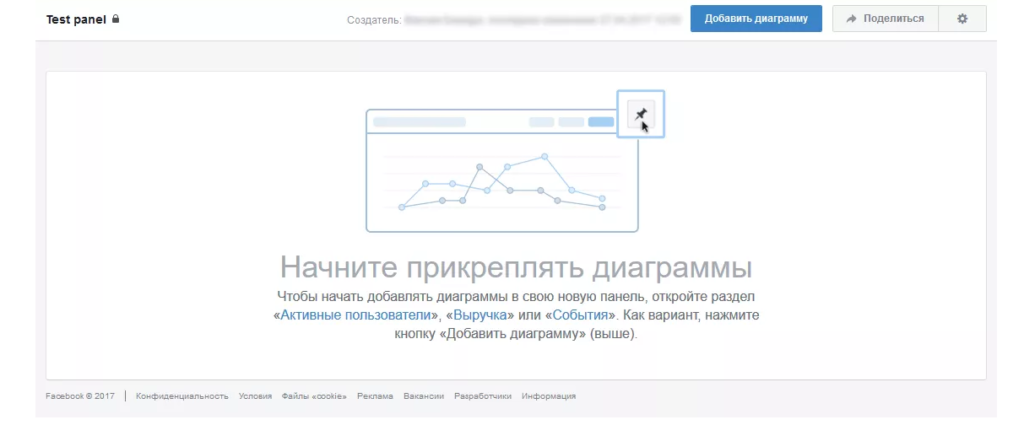
Then you need to select the desired events from the list. They will appear on the chart. You can combine multiple events, choose the desired metric from the list to define the time interval for data sampling.
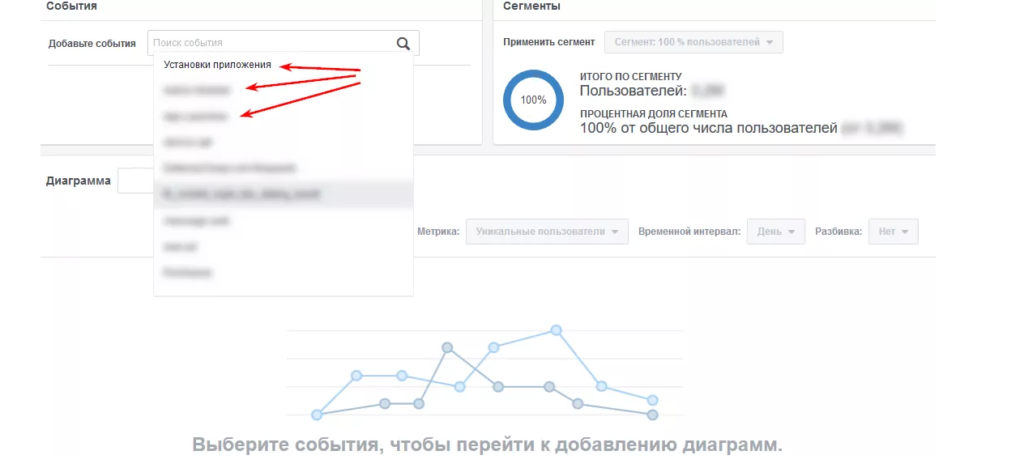
As a result, the bar chart will look like this:
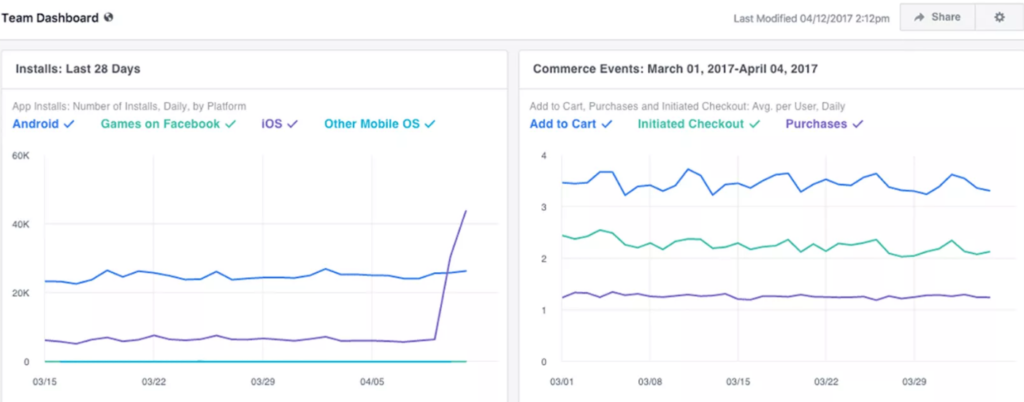
- Statistics section “Actions”
In the “Actions” collected statistics on audience interaction with the application. In this section you can find information about all passed events: installations, launches, achievements levels, transactions and so on. There is also information about audience retention, funnels targeted actions, income from trust operations. This section allows you to check the correctness of the transfer events.
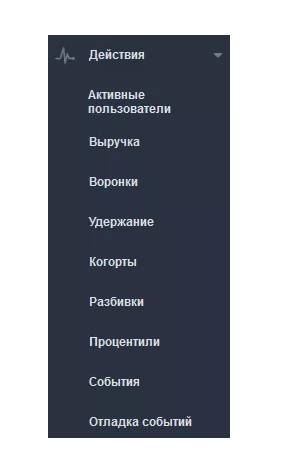
- How to find out who uses the app
The People section contains information about the audience of the application. Here you will find information on demographics, education, location, interests, income audience.

- From personal experience: on the demographic proportions of the audience of the app can flip on its head the idea of the target audience. For example, the target audience initial hypothesis was young, active people, mainly girls from middle-high income. However, after the demographic analysis, it became clear that a much more lucrative audience are Mature men and women with medium to low income.
- Notifications in Facebook Analytics: push and in-app campaigns
This section explains how to create campaigns, send push notifications and in-app notifications. The tool will be useful for users who want to increase the involvement of its audience, or to inform about current news, discounts or promotions.
The main difference from push in-app notifications that push is visible to the user even if the app is closed, and appears as part of the native interface of the device. In-app notifications will be displayed to the user during use of the application.

Background information on configuring the campaign:
In-app;
Push.
- Integration with Facebook
Section “Platform Facebook” on the metrics of application integration with the social network. Simply put, the results of the interaction of Facebook with the app.
Here you can find useful information:
- the amount of redirected traffic from Facebook;
- published on behalf of the application materials and the reaction to them;
- statistics repost materials;
- information about user logins via Facebook;
- information about the conversion performed with Account kit;
- statistics on the invitations and the notifications of the application;
- statistics on monetization of the app;
- usage statistics API.

- This section allows you to analyze user interaction with the application in the context of using the Facebook platform.
General settings
In the tab “Settings” you can change some settings. For example, to change the time zone, the access level for other users to download or exchange certificates for push campaigns.
Insights
Facebook Analytics is a free tool with a wealth of tools and best of all existing solutions integration with Facebook platform. The system provides detailed statistics about the audience that interacts with the application. Based on these statistics, you can optimize your promotional activities, and thus save the budget and increase ROMI (return of marketing investment).
As in the Ads Manager, the Facebook Analytics has its drawbacks.By attributing all results to the click date on the ad, Ads Manager distorts the display of the user’s path from installing the application to performing the desired action. Facebook Analytics skews the picture by not considering re-attribution, which can cause advertisers to pay multiple times for a referrer and not notice.
The platform is suitable for a project at the soft-launch stage, when it is unprofitable to buy an expensive paid tracker, and also if you are promoting the application exclusively using Facebook and Instagram.
